In the swiftly evolving domain of international commerce, the concept of eCommerce localization stands out as a transformative influence, reshaping the manner in which businesses establish connections with customers on a worldwide scale. This intricate process transcends mere translation, constituting a comprehensive strategy that tailors online platforms, content, and user interfaces to harmonize with the unique preferences, cultural nuances, and linguistic intricacies prevalent in diverse markets.
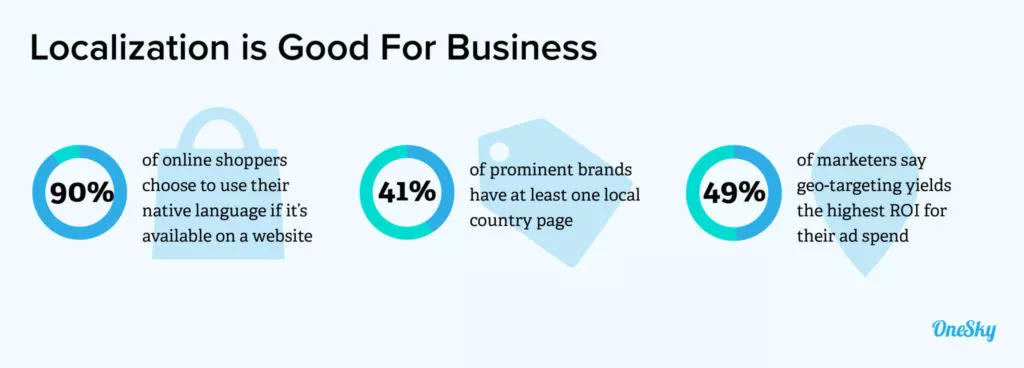
The essence of eCommerce localization lies in acknowledging that a one-size-fits-all approach is inadequate in the intricate landscape of global business. Companies aspiring to extend their reach across borders recognize the significance of resonating with local audiences, and eCommerce localization emerges as the crucial tool for unlocking the potential for personalized and seamless customer experiences.
Strategies for Ecommerce Localization:
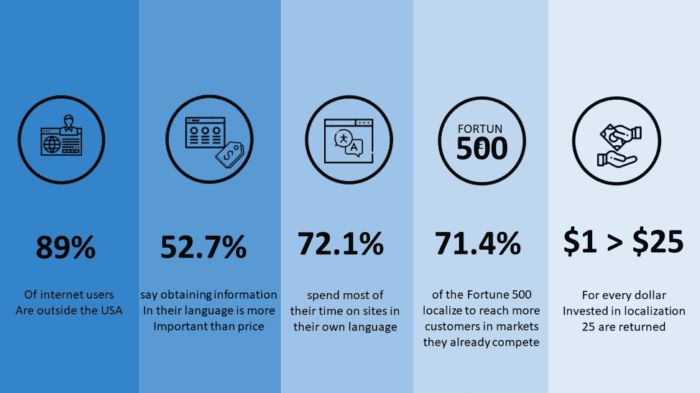
1. Customizing Content for Cultural Relevance:
Fostering a sense of familiarity and resonating with global customers requires aligning your online environment with local customs, values, and preferences. Achieving this involves adapting content to cultural nuances, creating a comfortable and welcoming experience. For instance, a global fast-food chain may customize its menu items and marketing campaigns to suit the dietary preferences and cultural sensitivities of different regions. This ensures that the brand connects authentically with diverse audiences.
Real-life Example:

Starbucks is a prime example of cultural alignment in action. When Starbucks expanded its presence to different countries, it didn’t just replicate its U.S. model. In China, for instance, Starbucks incorporated local tea-based beverages and adapted store designs to align with Chinese aesthetics, creating a culturally resonant experience.
2. Language Localization:
Establishing a profound connection with customers from different linguistic backgrounds is paramount. Customizing your messaging to suit linguistic nuances ensures deeper engagement with diverse audiences. For example, a software company may use language localization to adapt its user interface and support materials to the native languages of its international user base. Tools like Smartling and Localize play a crucial role in facilitating seamless language localization, enhancing the impact of your content and fostering a stronger connection with users across the globe.
Real-life Example:
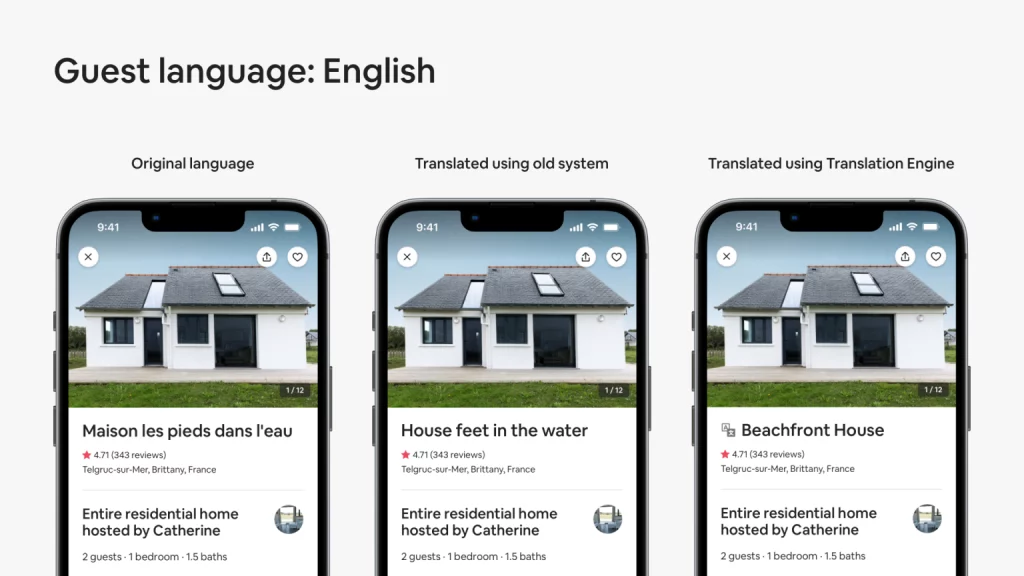
Airbnb effectively utilizes language localization to connect with a global audience. The platform offers its services in multiple languages, and the content is not merely translated but tailored to local nuances. For example, property descriptions and host communications are adapted to match the linguistic and cultural expectations of each region.
3. Acknowledging and Adapting to Varied Preferences:
Recognizing and catering to the diverse tastes and preferences of global consumers is essential for success. Tailoring product offerings, visuals, and promotional strategies to align with local expectations is a key aspect of this approach. For instance, a fashion retailer may adjust its inventory to reflect the fashion trends popular in different regions. Utilizing plugins like WooCommerce Multilingual for WordPress streamlines the process of managing multilingual product content, making it easier to cater to the preferences of a diverse customer base.
Real-life Example:

Nike showcases agility in adapting to regional trends by releasing sneakers tailored to specific markets. For instance, Nike’s collaborations with local designers or themed releases tied to cultural events resonate strongly in specific regions. This approach ensures that Nike’s offerings remain not only trendy but culturally relevant across diverse markets.
4. Staying Agile and Informed on Regional Preferences:
Remaining agile and attuned to regional trends is crucial for the sustained success of your eCommerce strategy. Incorporating these trends into your offerings ensures that your products and marketing remain current and appealing across diverse markets. For example, a tech company may use tools like Google Trends to analyze and leverage regional preferences when launching new products or marketing campaigns. This strategic approach allows businesses to stay relevant and resonate with customers in various cultural contexts.
5. Personalization as a Trust-Facilitating Tool:
In the ever-evolving landscape of e-commerce, personalization emerges as a potent force, not merely as a strategy for boosting sales, but as a crucial trust-facilitating tool. By tailoring user experiences to individual preferences, businesses can elevate customer satisfaction and forge stronger connections with a global audience. This goes beyond surface-level customization, delving into the realm of eCommerce localization to create interfaces that not only suggest products but do so in alignment with historical purchases and browsing behavior. This nuanced approach to personalization speaks directly to the diverse preferences, cultural nuances, and linguistic idiosyncrasies of customers across the globe.
Real-life Example:
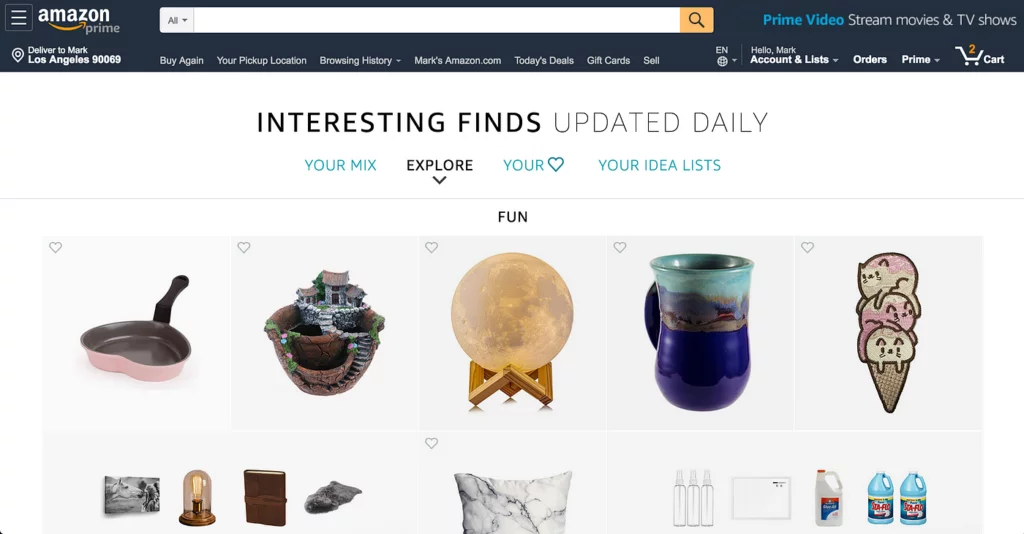
Amazon employs sophisticated personalization algorithms that analyze users’ past interactions, including purchases and browsing behavior.The platform suggests products tailored to individual preferences, enhancing user engagement and satisfaction.
6. Creating Familiarity:
A pivotal aspect of personalization lies in fostering a sense of familiarity. When customers feel that a brand understands and caters to their unique preferences, a profound bond is established. This is achieved through personalized recommendations that go beyond generic suggestions. Artificial Intelligence (AI) tools play a crucial role in enhancing the accuracy of these personalized suggestions. In the e-commerce space, platforms like Optimizely utilize AI to refine and optimize personalized suggestions, reinforcing trust and loyalty between the brand and the customer.
Real-life Example:

Netflix utilizes AI algorithms to analyze viewing habits and provide personalized content recommendations.Users experience a familiar and enjoyable content selection process, building trust and loyalty.
Learn about local SEO here.
7. Harmonizing with Local Shopping Habits:
The global market is a mosaic of diverse shopping habits, and successful e-commerce ventures recognize the importance of harmonizing with these local behaviors. Payment and currency considerations play a pivotal role in this process. Simplifying the purchasing journey involves incorporating local payment methods and displaying prices in the local currency. Tools like Stripe and PayPal further contribute to this harmonization by supporting a range of payment methods, reducing friction, and enhancing convenience for global customers.
Real-life Example:

Alibaba integrates various payment options, including Alipay, to accommodate diverse preferences in China. Simplified purchasing journeys, reduced friction, and increased convenience for users across different regions.
8. Navigational Adjustments:
Streamlining navigation based on regional expectations is another critical element of personalization. This extends beyond language localization to consider the placement of key elements, such as shopping carts and product filters, in accordance with prevalent user behaviors. Real-life examples demonstrate the effectiveness of this approach, with online travel agencies like Booking.com tailoring their website navigation to suit the preferences of users in different countries. WordPress plugins like WPML further contribute to intuitive navigation for multilingual websites, ensuring a seamless user experience that caters to the diverse needs of an international audience.
Real-life Example:
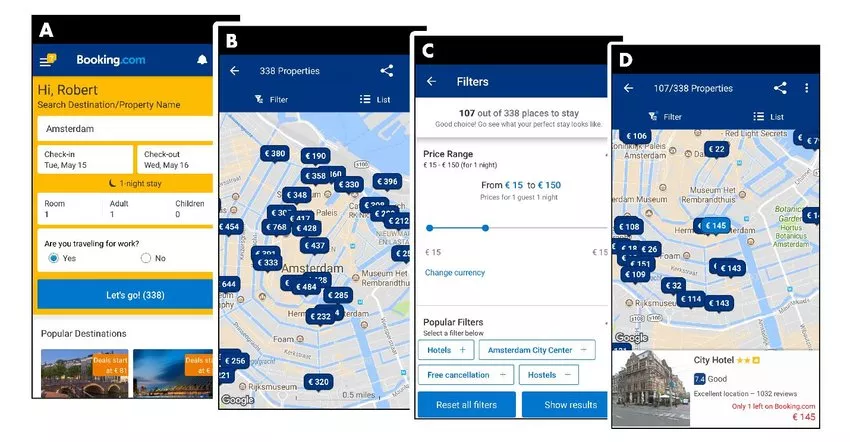
Booking.com tailors website navigation to suit the preferences of users in different countries.Intuitive navigation for users globally, contributing to a seamless and personalized online travel booking experience.
9. Showcasing Local Success Stories:
To build trust in diverse markets, feature positive experiences from local customers. Incorporate testimonials, reviews, and success stories tailored to each market on your eCommerce site. Platforms such as Yotpo seamlessly integrate customer reviews, providing authenticity and reliability.
Real-life Example:

Zendesk, a customer support platform is widely used by companies like Shopify and Slack to provide multilingual support, demonstrating the importance of tailored assistance in building trust.
10. Localized Customer Support:
Establishing a robust customer support system that communicates in the language of your global customers is essential for building trust. Localized support ensures prompt and effective communication. Tools like Zendesk offer multilingual customer support solutions, allowing businesses to address queries and concerns in the native languages of diverse markets.
Real-life Example:

IKEA, a global furniture retailer tailors its marketing and promotional campaigns to suit local festivities and cultural events, creating a connection with customers and building trust through cultural relevance.
11. Strategic Promotional Campaigns:
Tailor promotional campaigns to align with local events, holidays, and festivities, showcasing cultural sensitivity and enhancing the appeal of your offerings during specific seasons.
Real-life Example:

Coca-Cola, the beverage giant tailors its marketing campaigns to match local events and cultural celebrations worldwide. This approach resonates with diverse audiences, showcasing an appreciation for local customs and reinforcing trust in the brand.
12. Geo-Targeted Discounts:
Deploying geo-targeted discounts and incentives based on regional trends and purchasing behaviors creates a personalized and appealing shopping experience. eCommerce platforms like Magento offer built-in capabilities for implementing region-specific discounts.
Real-life Example

Dell implements geo-targeted discounts during back-to-school seasons in different regions, aligning with local trends and building trust with student customers.
13. Adapting to Regulatory Requirements:
Navigating diverse regulatory landscapes is crucial for building trust and safeguarding your brand reputation. Ensure your eCommerce platform complies with local laws. Legal consultation services like Termageddon assist in generating compliant policies for various jurisdictions.
Real-life Example:

Alipay, the payment platform ensures legal compliance with financial regulations in various countries, fostering trust among users by prioritizing security and regulatory adherence.
14. Mobile Optimization for Global Audiences:
Optimize your eCommerce platform for diverse devices and screen sizes, ensuring a seamless experience for global customers. Responsive design frameworks like Bootstrap facilitate consistent presentation across various devices.
Real-life Example:
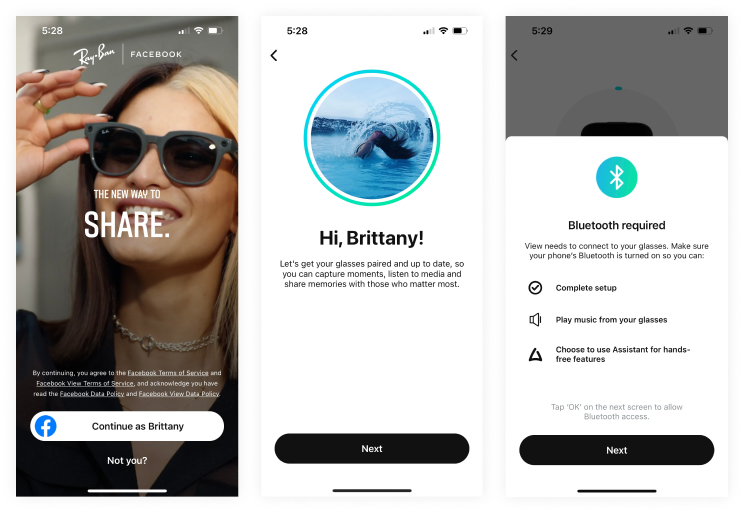
Luxottica (Ray-Ban), the eyewear company utilizes responsive design to provide a seamless user experience across devices, ensuring a consistent and user-friendly interface for customers worldwide.
15. Mobile-Friendly Interfaces:
Prioritize mobile-friendliness to cater to regions where mobile devices are the primary means of online access. This enhances accessibility and broadens your reach. eCommerce platforms like Shopify offer mobile-responsive themes.
Real-life Example:
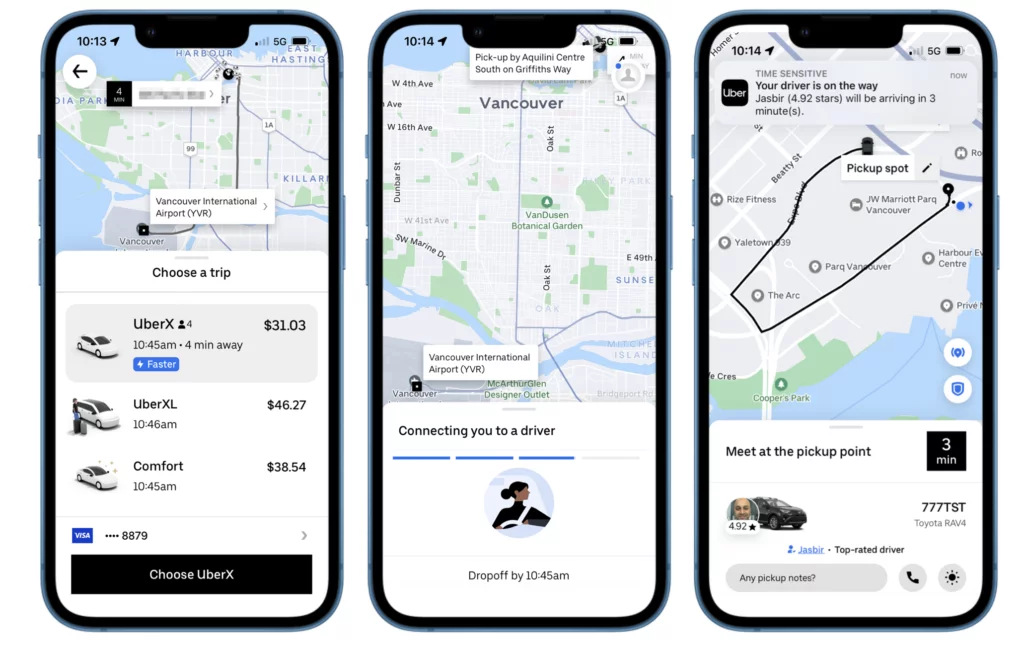
Uber, The ride-sharing platform prioritizes a mobile-friendly interface, allowing users worldwide to seamlessly book rides through their smartphones. This approach enhances accessibility and trust among a global user base.
Conclusion:
In the interconnected global eCommerce, the journey doesn’t conclude with a single transaction. It extends to the realm of relationships – relationships built on trust, personalized experiences, and an unwavering commitment to meeting the diverse needs of customers worldwide. As businesses embark on this journey, the possibilities are vast, and the rewards are substantial for those who navigate the path of eCommerce localization with insight, sensitivity, and a commitment to excellence.
FAQs on Localization:
Are there tools available to facilitate language localization for eCommerce businesses?
Yes, there are several tools available to facilitate language localization. Smartling and Localize are examples of tools that streamline the language localization process, making it more efficient and effective for businesses looking to connect with global audiences.
Are there tools available to facilitate language localization for eCommerce businesses?
Yes, there are several tools available to facilitate language localization. Smartling and Localize are examples of tools that streamline the language localization process, making it more efficient and effective for businesses looking to connect with global audiences.
What steps should businesses take to ensure legal and regulatory compliance in eCommerce localization?
Ensuring legal and regulatory compliance in eCommerce localization requires thorough research and adherence to local laws. Businesses should assess and address legal requirements related to data protection, consumer rights, and other relevant regulations. This commitment enhances trust and safeguards the brand’s reputation.



